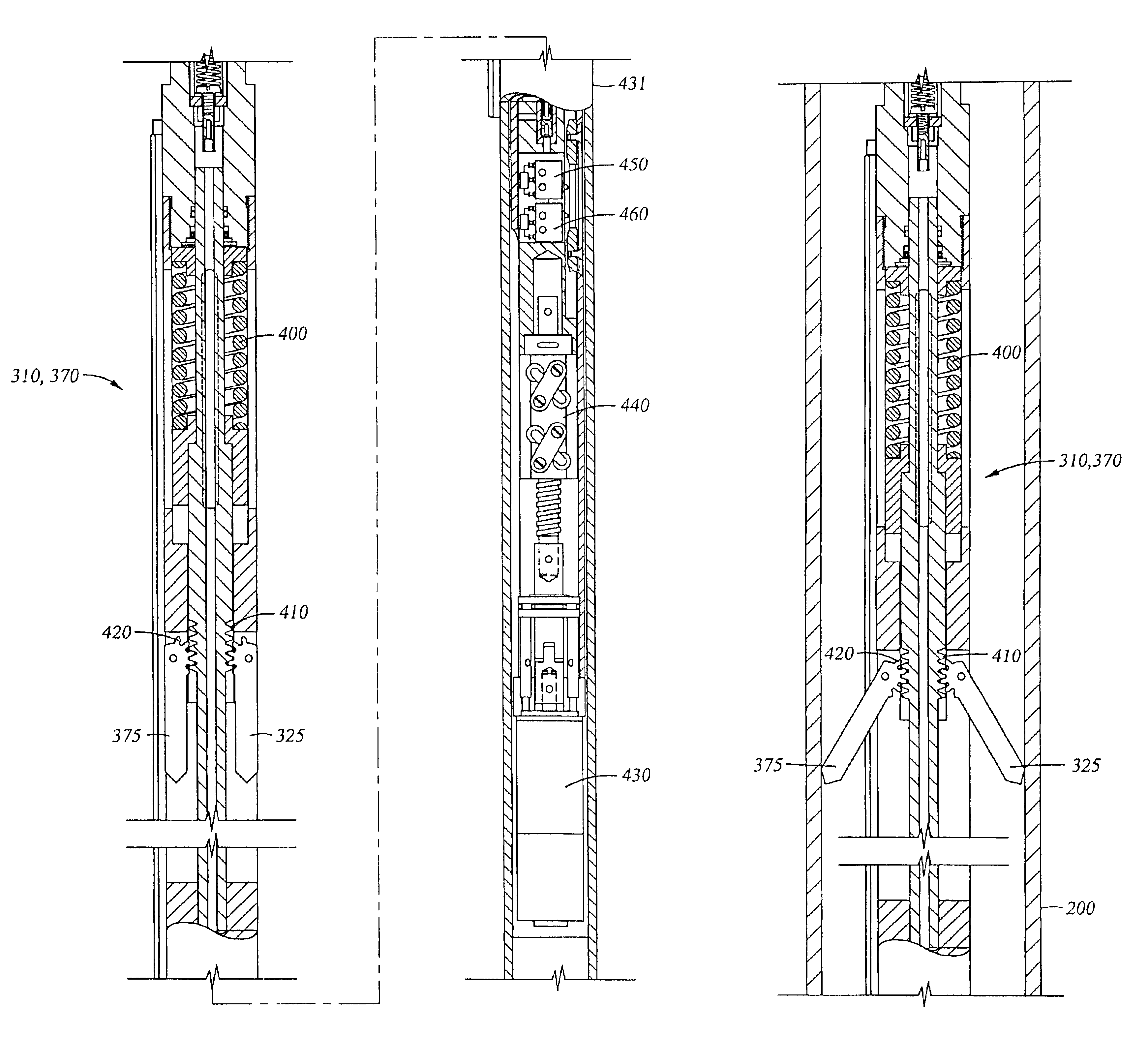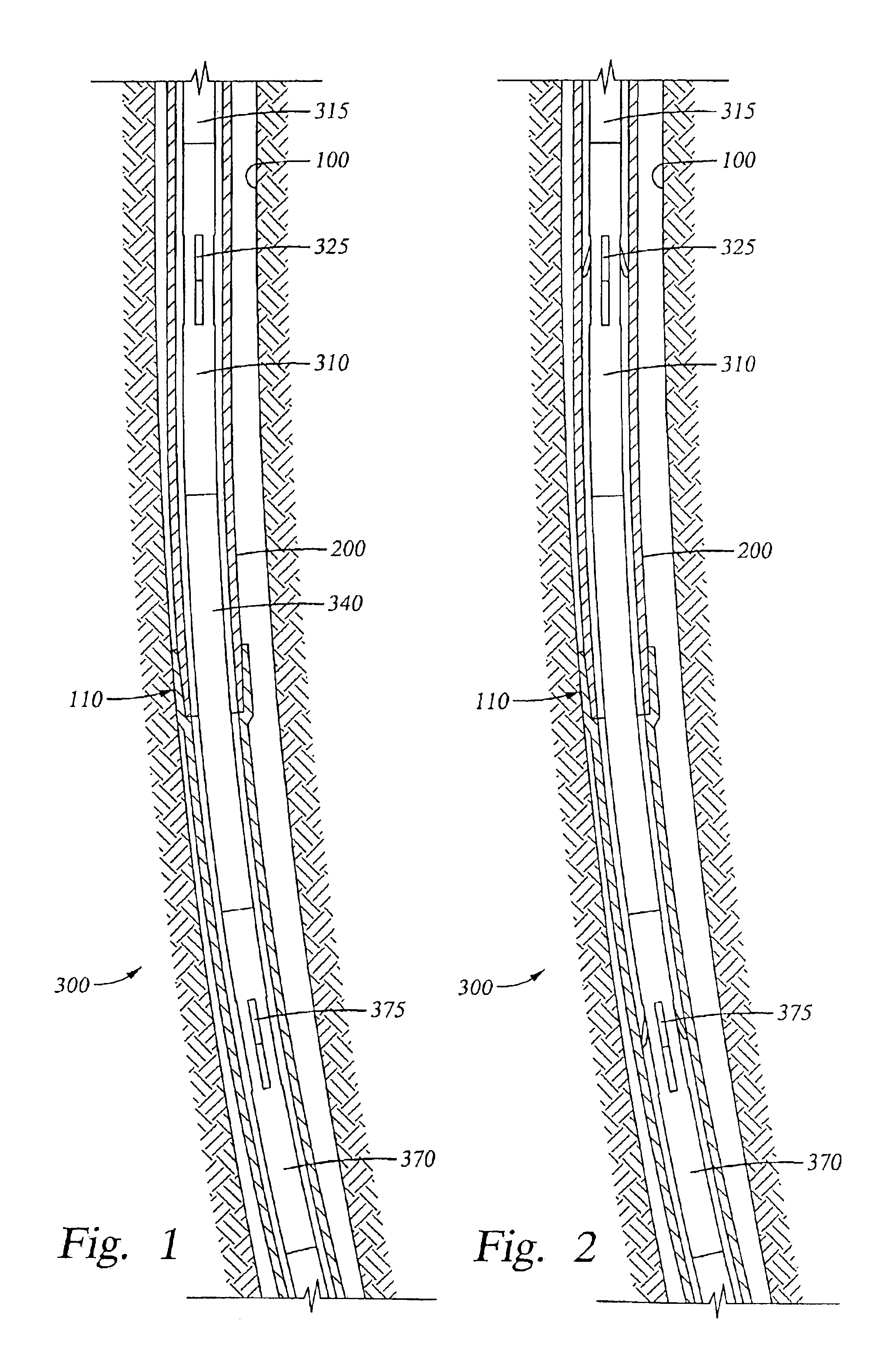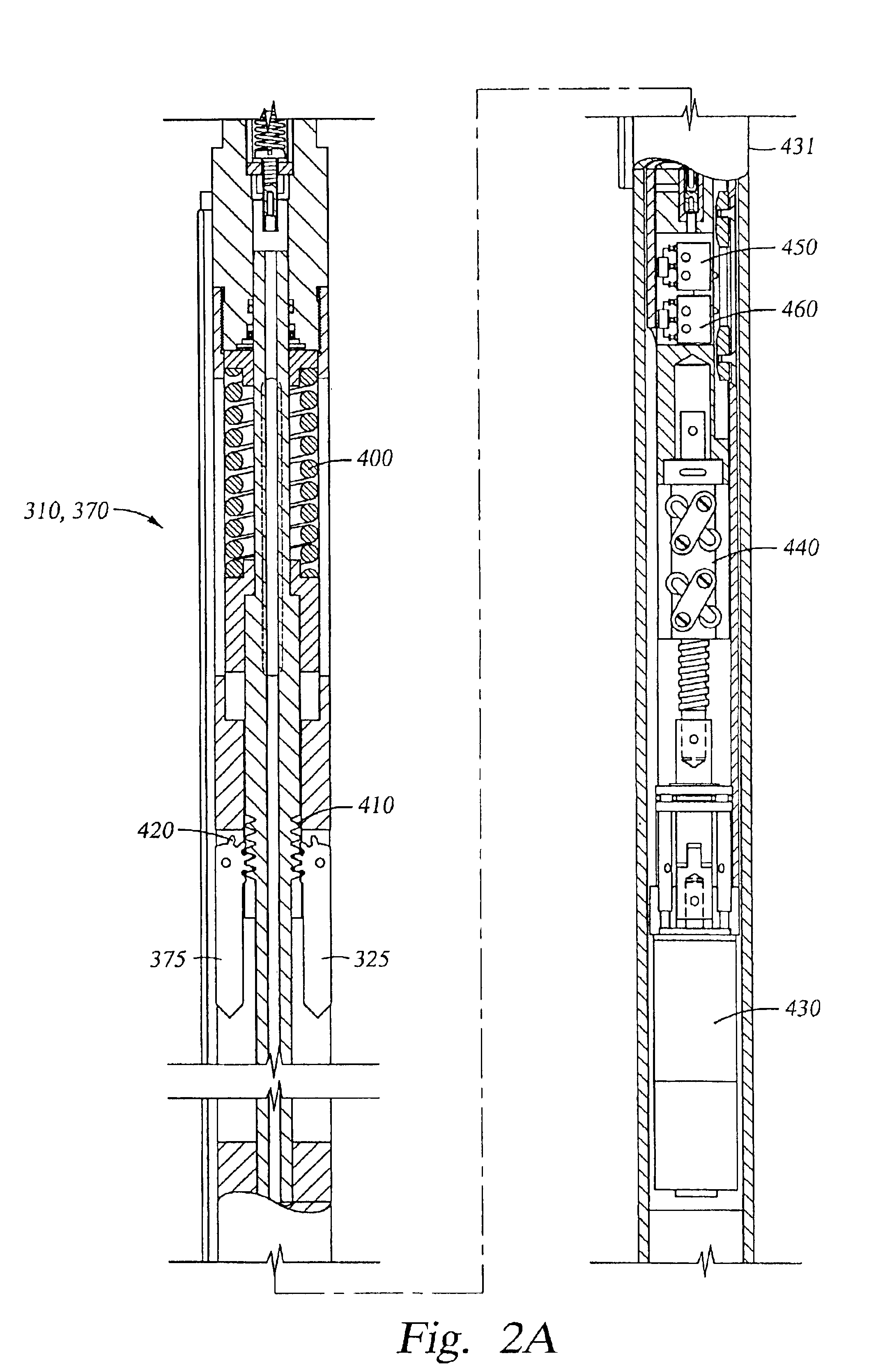Dual sensor freepoint tool
a freepoint and tool technology, applied in the field of downhole tools, can solve the problems of affecting the operation of drilling operations, the connection of drill string and otherwise stuck, and the need to stop all drilling operations
- Summary
- Abstract
- Description
- Claims
- Application Information
AI Technical Summary
Benefits of technology
Problems solved by technology
Method used
Image
Examples
Embodiment Construction
FIG. 1 is a partial section view of a freepoint tool 300 attached to the end of a run in string 315. Both the run in string 315 and the freepoint tool 300 are located within a drill string 200 stuck in a wellbore 100 at sticking point 110. The freepoint tool 300 is comprised of an upper anchor assembly 310, a dual sensor assembly 340 and a lower anchor assembly 370. The upper anchor assembly 310 and the lower anchor assembly 360 provide a means of attaching each end of the freepoint tool 300 to the stuck drill string 200, while the dual sensor assembly 340 is capable of measuring the response of the drill string 200 to either a tensile or torsional force applied at the surface.
FIG. 2 is a partial section view of a run in string 315 with a freepoint tool 300 anchored within a drill string 200 that is stuck in a wellbore 100 at sticking point 110. In this Figure, the upper anchor arms 325 and the lower anchor arms 375 are shown engaged with the inner surface of the drill string 200. T...
PUM
 Login to View More
Login to View More Abstract
Description
Claims
Application Information
 Login to View More
Login to View More - R&D
- Intellectual Property
- Life Sciences
- Materials
- Tech Scout
- Unparalleled Data Quality
- Higher Quality Content
- 60% Fewer Hallucinations
Browse by: Latest US Patents, China's latest patents, Technical Efficacy Thesaurus, Application Domain, Technology Topic, Popular Technical Reports.
© 2025 PatSnap. All rights reserved.Legal|Privacy policy|Modern Slavery Act Transparency Statement|Sitemap|About US| Contact US: help@patsnap.com



